Yener Torun uncovers Istanbul, one Instagram at a time
Yener Torun has made quite a name for himself on Instagram. His colourful profile is simplistically beautiful, showcasing an alternative view of the traditional Turkish city, Istanbul.
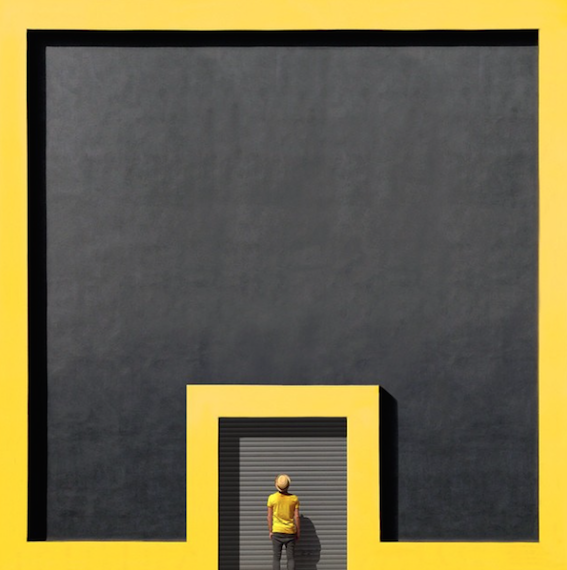
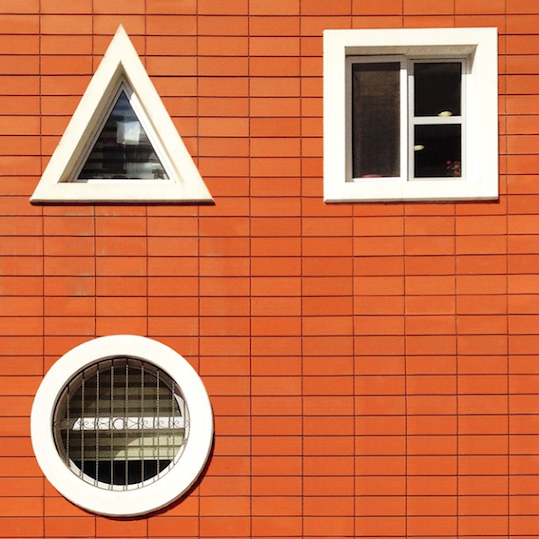
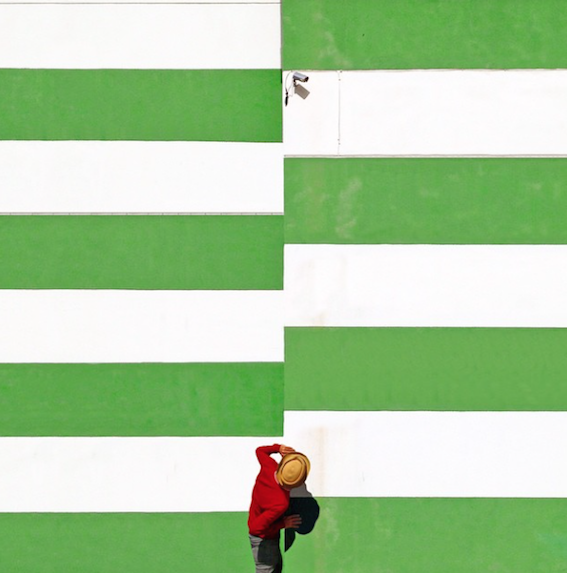
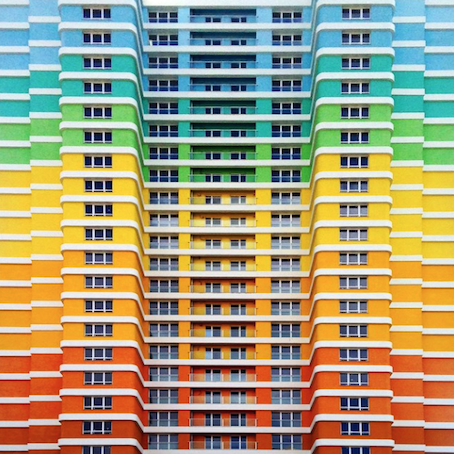
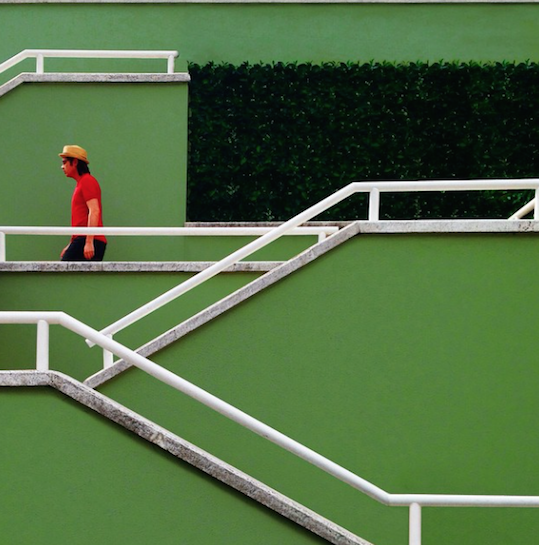
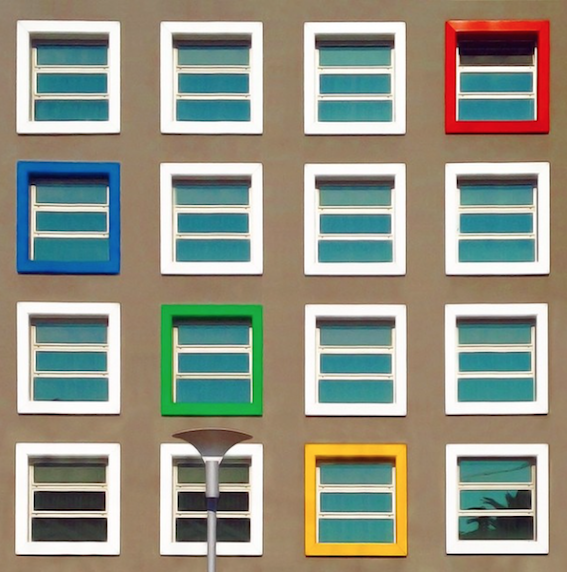
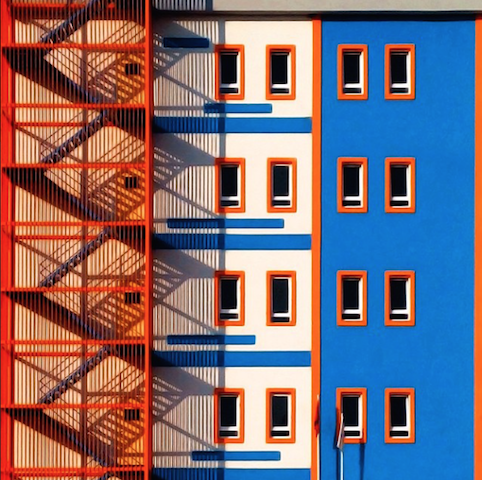
Yener Torun has made quite a name for himself on Instagram. His colourful profile is simplistically beautiful, showcasing an alternative view of the traditional Turkish city, Istanbul.
With a following of over 40,000 thousand on the photographic platform, 32-year-old Torun’s passion for buildings stemmed from his architectural background. His imagery captures a side to Istanbul even long term residents are unaware of, the brightly coloured buildings and geometric shapes tucked away beneath the layer of traditional.
Torun’s quest to hunt out architectural treasures began after he noticed how proficient Instagram was at bringing these rainbow buildings to life. He was able to give these hidden buildings, walls and geometric shapes new meaning, all with the help of his trusty iPhone. By escaping the one-dimensional, conventional side to Istanbul he believes he is able to provide a better understanding of the city, for his viewers, and himself.
His work displays his preference for modernist architecture, choosing to stay clear of the ancient scene most would associate with Istanbul. Favoring to photographing the business districts of Kavacik, Merter and Cevizlibag, his work also often taking him to other cities, such as Izmir, Bursa and Mugla.
Having lived in the city for 14 years, he has openly admitted that he does not consider himself to be an ‘architectural photographer’, and finding locations can sometimes be a challenging, mental exercise. One he is willing to participate in, as the city still manages to surprise him and reveal spots that are worth sharing with his 40,000 thousand followers.
Offering an alternative view of the historic Turkish city, Torun’s work not only captivates his viewers with bold colours, but also gives them an insight to a new realm of Istanbul. Tourists, and even residents, associate the city with mosques, old streets and traditional life, Torun’s photography demonstrations that there is more than meets the eye.
His attention to detail is understatedly clever, he coordination the colours of the walls, to the individuals that happen to be passing by. Reflecting both the energy of the architecture, and giving his human subjects a story by contrasting their clothing to the paint pallet like walls. Blending the buildings and the people brings the images to life; the elements juxtapose effortlessly.
It’s hard to ever imagine Torun’s Instagram profile as anything but a kaleidoscopic of vivid colours, but he began photographing like most. It wasn’t till he discovered the minimalistic beauty that Istanbul had kept a secret that he began letting his followers in on it too.
His profile not only stands out in the overwhelming amount of people using the platform today, it begs you to scroll further down, eyes glued to the colour that jumps out of the phone. Like an addiction, he’s hooked anyone who happen to stumble across his page, the images could be pages in a book, and deserve to be for that matter – perhaps a new project is on the horizon.
Hayden Kays on The Top Ten
Hayden is a visual artist who splices together witty wordplay with carefully chosen found photographs, often subverting the meaning of both.
Hayden is a visual artist who splices together witty wordplay with carefully chosen found photographs, often subverting the meaning of both. Not one to be tied to just one medium, Hayden also works with sculpture, drawing, and printmaking.
His new show ‘The Top Ten’ at Cob Galley Camden, is a collection of the ten most popular artworks from his successful typewriter series, and will tour around the world this summer.
BM – Why did you decide to re-curate the typewriter series into this new show?
HK – I was getting loads of enquiries about the same works again and again in ‘The Hot One Hundred’ and not wanting to keep producing the A4 versions it seemed logical to produce larger print editions of the most popular and some of my personal favorites.
BM – Your work masks a poignant message under a veil of comedy. Why do you think this contrast is necessary to deliver your message?
HK – I don’t think it’s crucial. I just fucking love laughing. I have an extreme sense of humour; it’s virtually a disability. I find EVERYTHING funny. I wish I had control over it, I’m envious of people who can control laughter but I think they are few and far between, this is another reason I love to use humour in my work – laughter is convulsive, you don’t decide what to laugh at. You laugh, then you worry about whether or not you should have later.
BM – You identify yourself as a ‘Pop Artist’, when most pop art is vacuous. You seem to have a deeper ideology than just making money. Why do you identify with Pop Art so much?
HK – I think I’m becoming more and more of a ‘Pop Artist’ in the sense that my work is becoming more and more popular. Popularity is important to me. I want my work to be liked. Find me an artist that doesn’t and I’ll show you a liar.
BM – Do you believe in a high art/ low art distinction, and where would you place yourself?
HK – I believe it’s either Art or it isn’t Art, and unfortunately I see ‘it isn’t Art’ by far too many people that call themselves artists.
BM – Why do you think that you often get grouped amongst the ‘street artists’, despite doing very little work outside?
HK – Because people don’t know where to put me. We are all obsessed with compartmentalising everything, everyone, it helps us attempt to understand these terrifying surroundings.
BM – As a lot of your work is humorous, does that mean that it is fun to make, or can it be stressful at times?
HK – There is a common misconception that artists are just having a great time splashing paint around a lofty studio, smoking roll-ups and shagging loads of girls. I just smoke the roll-ups.
BM – How much of what you do is hyperbole?
HK – You can take my work however you like, just as long as you take it.
BM – Sometimes it’s hard to tell who it is you’re making fun of in your work, the subject of the piece or the viewer, or even society as a whole, is this intentional?
HK – I don’t want to make work that's instantly or easily resolved. Questions that you answer, you tend to move on and away from. I want you to keep coming back to me.
BM – A lot of your work is text and found imagery based, how do you collate your ideas. Do you sketch or is your sketchbook full of lists?
HK – I have piles and piles of sketchbooks full of ideas. I hope when I’m dead they’ll slowly all come to life as I’ll never find the time to make them all exist in my lifetime.
BM – Do you believe an artist should have to explain their work, or is it the public’s role to decipher it?
HK- I don’t think art should have to be explained. It should be simple. Ask yourself do I like this? If you do, you do, if you don’t you don’t. You shouldn’t make it much harder.
The Top Ten opens on the 2nd of April 2015 at Cob Gallery Camden | Hayden Kays
It’s About Time : Review
Set in the basement beneath the Rich Mix Studios, It’s About Time exhibits five women artists, all originating from the Arab world and now living in Britain.
“ I want people to see the artists not only as women from the Arab world, but as women who live in a global world.”
Set in the basement beneath the Rich Mix Studios, It’s About Time exhibits five women artists, all originating from the Arab world and now living in Britain. The exhibition’s premier came as part of Arab Women Artists Now, a one day festival that offers a platform to the artistic excellence of an increasing active, increasingly present subsection of British society.
The works on display are diverse, both in terms of subject matter and medium. The first to greet the viewer is a small red screen-print of graffiti daubed by women in the notorious Khiam prison in Lebanon. It sits along from a brazen clash of greens and red, an abstract take on the Arabic symbol for love.
The quality of the exhibition’s works is overt and as much as its cultural foundation is on-topic enough to draw in on-the-fencers, It’s About Time actively attempts to move itself away from its weighty labels. And their potential to obscure its artistic merit.
Wander down into the spacious, white washed Lower Gallery and you will find nine pieces of work. Three are labelled and six not. There is no literature explaining the artistic origins of the pieces and little can be gleamed from the title. The thinking behind this context-less presentation, according to Zina Papageorgiou, the curator, stems from both the intended viewing experience and conceptual foundation of the exhibition.


I didn’t want to do another exhibition on Arab, female art, Zina explains as she moves across the gallery. Sometimes context is helpful when viewing art. It can colour the artwork and allow an understanding deeper than the aesthetic presentation. I think that when it comes to an exhibition with such heavy, thematic underpinning however, the context can distract from the intentions of the artist as an individual.
One of the exhibition’s individuals is Malika Squalli. Malika is an Austrian-Moroccan who has been travelling the world finding the people and locations that capture her thematic focus. A sense of questioned identity is constantly present in Malika’s washed out, grey photography. A women jumps to catch a yellow balloon, stands beneath a wandering cloud or behind the lens, looking out on a coolly brown, hilly tundra. In each the subject is either partially obscured, the result of Photoshop manipulation, or absent.
The sense of displacement present in this work is manifest in Malika, as an emigrant turned perpetual traveller, and the exhibition in general. Walking further round the gallery and this sense of displacement comes forward in a refrain of contrasts; the crisp, geometrically displayed calligraphy of Dia Batal perched next to Ina Halabi’s multi-media exploration into the internal politics of the Druze Community; Malika’s gentle photography alongside Saadeh George’s brutal painted work. It is a testament to the deft touch of Zina that the pieces operate at once individually, standing on their own as manifestations of their artist’s identity and together, congruent parts of the show’s broader cultural label.
There is a complicated sense of identity present with these artists, Zina says, herself a Greek woman working between The Palestine Conservatoire and Britain. I want people to see the artists not only as women from the Arab world, but as women who live in a global world. Sometimes they don’t want to comment on their ethnicity. I don’t think the “us and them” dynamic is applicable anymore.
There is an underlying awareness of the cultural commonality of the pieces that comes across through the Arabic text and a shared middle-Eastern focus. But rather than this emerging as the prevailing thrust of the exhibition, through its universal themes of love, displacement and loss, It’s About Time successfully manages to distance itself from a cumbersome cultural binary able to diminish some truly excellent work.
It’s About Time is part of the Arab Women Artists Now festival organised by Arts Canteen: a non-profit organisation dedicated to supporting emerging artists from the Arab world.
7th – 29th March 2015 | Rich Mix Lower Gallery
Beauty in Desolation: Photographer Florian Ruiz
French photographer Florian Ruiz captures life at its most remote, his subject matter strikingly distant from society as we are accustomed to seeing it in the Western world.
From a harrowing exploration of prostitute’s rooms in the series Two star hotel to a study of Japan’s abandoned radioactive roads in Lost Highway through Google Earth, French photographer Florian Ruiz captures life at its most remote, his subject matter strikingly distant from society as we are accustomed to seeing it in the Western world.
Aiming to express the atmosphere, feelings, and sensations of desolate locations, Ruiz demonstrates a propensity for locating people and places with backstories just as interesting as the pictures that result from his studies:
“I try to capture the in-between, life at the margins, and borderlines of lives and places.”
Ruiz’s portfolio has a distinct Eastern flavour, with galleries compiled in China, Mongolia, Pakistan and various locations in Japan available to view on his website.
Fukushima, Invisible Pain, a series of photographs which took second place at the Sony World Photography Awards 2013 (professional conceptual category) visually communicates the stillness and ghostly tension that surrounded the eponymous prefecture after the 2011 nuclear disaster; moving comfortably across a variety of photographic styles, Ruiz demonstrates the creative use of a pin hole camera on long exposure in this particular series, making for evocative, eerily distorted compositions.





Exploring similar themes to those found in his Fukushima studies, Brezhnev’s Gift is an insight into the lives of Mongolia’s Erdenet inhabitants, their existence poised between dreams of a better life and the reality of the unsustainable mining activity the town they choose to inhabit was built upon in the 70s. Ruiz’s images hint at the futility of everyday life, a poignant lethargic stasis looming over every shot; the viewer is left unsure whether to admire or weep for the resilience of humanity.
Ruiz’s most recent study tells of the lives of those dwelling on the borders of China’s major cities, a collection of images as colourful and eclectic as the subjects they present; entitled Borderlands, the series juxtaposes scenic panoramas with a mix of intimate and action-filled portraits, paralleling life and the landscapes on which it transpires.
Ruiz has been published and exhibited widely since 2005, regularly popping up in photography magazines and journals, including a spot in the 2010 British Journal of Photography; he currently lives and works in Tokyo.
Food for thought | Europe’s best designed restaurants
Here is a list of six brilliantly designed and accessible restaurants within Europe that have perfected their menus and design principles and will certainly have you coming back for more
When it comes to dining, in a continent surrounded by some of the most exciting culinary landscapes in the world, the well-versed foodie is definitely spoilt for choice. But it doesn’t take much to realise that the design of a restaurant will often have a far bigger impact on your dining experience than the food itself. Many foodies I know will deny the importance of ambience for their satisfaction, but décor for the restaurateur is quickly becoming a number one priority, and a priority that’s showing how we don’t always have to go for the often over priced, is-that-even-a-portion-sized restaurant, to fine, dine and wine. Here is a list of six brilliantly designed and accessible restaurants within Europe that have perfected their menus and design principles and will certainly have you coming back for more.
Short days, long winters, cold nights... The Danes know how to combat Denmark’s seasonal gloom with the art of hygge and its much talked about New Nordic cuisine, but it all comes at a price, and a price that’ll have you reaching deep into the pockets of your feather down jacket to foot the bill. But not at Höst.
Founded by the restaurant group Cofoco together with the local architecture and design duo Menu and Norm Architects, Höst is a traditional new Nordic restaurant, located in the heart of Copenhagen in the neighbourhood of Nansensgade with a modern twist. The restaurant has already won three international design awards including the World’s Best-Designed Restaurant and Best European Restaurant at London’s Restaurant & Design Awards.
Decked with its bare wooden furniture, subtle grey walls and soft lighting, Höst strips everything back to basics to complement the simple delights of Nordic cooking with a touch of modernism, resulting in something aesthetically and mouth wateringly delicious. Their menu includes dishes such asSmoked Trout with cauliflower-puré and pickled mushrooms with truffle and Norwegian lobster, juniper-pickled carrots, sea.buckthorn, juniper cream, hazelnuts and browned butter.
De Kas | Amsterdam
Adopting an environmentally friendly lifestyle whilst eating out might be easier than you imagined. In 2001, chef Gert Jan Hageman converted an eight-meter high greenhouse and former 1920s Municipal Nursery into a self-sufficient restaurant, which has been the source of inspiration to all grow-your-own-foodies since.
De Kas restaurant sources all of its own ingredients in the restaurant’s surrounding gardens and farmland nearby. With produce picked only hours before it is served, the restaurant has a three-course, Nordic inspired, fixed menu that changes according to the season and its availability to ensure that you are graced with a meal that promises to be fresher than fresh.
Kamerlingh Onneslaan 3, 1097 DE | +31204624562 | info@restaurantdekas.nl
Dishoom - King’s Cross | London
One day, an eccentric old Irani Café (born circa 1930, Bombay) made a long trip from Bombay in 1970 to London in 2010… Three years down the line and Dishoom have opened its third restaurant in King’s Cross, with an even better Bombay inspired design. Formally a railway transit shed dating back to the 1850s, the restaurant pays homeage to Bombay’s Irani cafes and is reminiscent of Mumbai’s Victoria Terminus that once passed between Britain and the Empire (London and Bombay).
Owned by cousins Shamil and Kavi Thakrar, Dishoom re-invents this period of Indian history in a beautifully designed space sprawling across four floors, furnished with colonial-style bentwood chairs, ornate tiles, ceiling fans and colonial styled décor. The restaurant has a reception and bar on the ground floor, a basement bar, a first floor dining room decked with curved seating overlooking a private dining area, and a chef’s open kitchen on the second floor where you can watch your food being prepared.
Chicken thigh meat steeped overnight in garlic and ginger, a vegetarian Paneer tikka marinated and gently charred with red and green capsicums or the Irani cafe favourite, Lamb keema and peas are just a few of the fine dishes Dishoom has to offer.
020 7420 9321 | 5 Stable Street, London N1C 4AB
Fame/Katerschmaus – Kater holzig | Berlin
Set in an old soap factory on the upper floor of the graffiti covered, art infused KaterHolzig complex, Katerschmaus is an open kitchen-restaurant turfing out great German inspired cuisine, boasting impressive views of the Spree right on the water and better still, with its own rooftop bar. With a menu that changes weekly, expect Argentinian steaks, abruzzo truffles and a culminating sugar boost that will settle your taste buds and have you ready to re-enter the revelry downstairs.
Oh, and no photos allowed, you’re cooler than that.
Holzmarktstraße 2510243 | fame@katerschmaus.de | +49 30 510 521 34
Kronenhalle | Zurich
A haven of art and comfort, Zurich’s Kronenhalle is a restaurant and bar with an astonishing display of 20thcentury art by the likes of Chagall, Mirò, Picasso, Braque and Matisse, that all belonged to one man, silk magnate Gustav Zumsteg. Since its opening in 1924, the restaurant has always been a refuge for art and allegedly a haven for figures such as Coco Chanel, Yves Saint Laurent, Pablo Picasso and Alberto Giacometti. Today its elegant menu complements the restaurant’s interior; minced veal ‘kronenhalle’ style, Chateaubriand and mousse au Chocolat to name a few.
The restaurant continues to attract an eclectic mix of people and is quickly becoming a hip hangout for Zurich’s students and its creative elite.
Rämistrasse 4, 8001 | +41 44 262 99 00
Nose2tail | Copenhagen
Valkendorfsgade 22, 1151 København K
Introducing, ‘Copenhagen’s first sustainable gastro pub’, a cosy, candlelit haven for all meat lover’s, set within the Kødbyen area of Vesterbro in Copenhagen –the ‘Meat Packing District’ - and in what was a former butcher’s house.
Inspired by the British phenomenon River Cottage, the restaurant prides itself for using locally sourced produce and evolves around sustainability, using every part of the slaughtered animal (hence its name, nose to tail) to minimise waste. The menu is divided into three sections, the fish, entrails and the animal. No hidden agendas just honest, tasty, eco friendly food that gives a modern twist to the pub classics. Organic free range pulled pork, organic burgers made from free range beef, deviled organic free range eggs, to name a few. And if that wasn’t enough, the restaurant houses a great selection of local, Danish beers too.
Valkendorfsgade 22, 1151 København K | +45 33 93 50 45
Painting and Perception with Artist Lina Tharsing
With a portfolio consisting primarily of painted works, Kentucky-based artist Lina Tharsing demonstrates a propensity for creating dreamy compositions that exist somewhere in-between realism and surrealism
With a portfolio consisting primarily of painted works, Kentucky-based artist Lina Tharsing demonstrates a propensity for creating dreamy compositions that exist somewhere in-between realism and surrealism.
Taking inspiration from sources including antique books, anatomical drawings, botanical illustrations and Life magazines from the 40s and 50s, Lina’s works engage with a variety of themes and ideas including nature, the loss of it, and the intersection between imagination and reality.
Exemplifying her ability to decontextualize and reconstruct situations in her work, the artist’s recent series Making a New Forest is based on a collection of old photographs depicting the construction of displays and dioramas at the American Museum of Natural History; going beyond the immediate suggestions of reconstruction of a destroyed environment that the paintings connote, Lina’s works also address the complexities of perception, inviting the viewer to look through a window onto other worlds and landscapes, across place and time, and to find their own truths:
“My paintings, like the dioramas that inspired them, manipulate our perception of reality and force us to question our own place within the confines of time and space.”





Also remarkable are some of the artist’s early mixed media works, such as the visually engaging series Collages compiled out of old polaroid photographs; the series Walgreens Film Camera demonstrates Lina’s ability to capture moments in time, the images containing much more than what is visible at first glance, alive with unknown possibilities that speak to each viewer individually.
Named a superstar of Southern art by Oxford American in 2012, Tharsing’s work has been shown widely across the South-Eastern United States; she continues to live and work in Kentucky, with some of her recent work including collaboration with the Lexington Art League community supported art project.
Named a superstar of Southern art by Oxford American in 2012, Tharsing’s work has been shown widely across the South-Eastern United States; she continues to live and work in Kentucky, with some of her recent work including collaboration with the Lexington Art League community supported art project.
Don’t Ask Why - Ask Y Not?
International Women’s Day may have just passed, but Sweet ‘Art and London’s Espacio Gallery are keeping femininity at the forefront with their upcoming aid exhibition Y Not?
International Women’s Day may have just passed, but Sweet ‘Art and London’s Espacio Gallery are keeping femininity at the forefront with their upcoming aid exhibition Y Not?
Exploring everything from femininity to feminine identity and women’s day, the event will focus on the female form, gender identity, feminist issues, social and political issues and constructs, personal accounts, and perspectives.
Contributing artists, regardless of what gender they identify with, have been invited to celebrate, critique, challenge, ridicule and reflect notions of femininity in our society and internationally.
Launched in 2012, Sweet ‘Art are a non-profit organisation dedicated to the promotion of upcoming and established artists; they will be partnering up with Lensational, a creative organisation involved in the emotional and economic empowerment of women through the provision of photography training and equipment.
Also partnered are The LMP Gallery, set to host a parallel show across the pond in Austin, Texas - the two spaces will be exchanging 5 artworks to exhibit during the show run in a display of international solidarity and connectedness.
The private view will take place on Thursday 2 April from 6-9pm, and promises to be an evening of thought provoking fun with welcome cocktails courtesy of Courvoisier along with the usual Sweet ‘Art freebies and surprises!
Y Not?
Espacio Gallery
31 March - 5 April 2015
Private View: Thursday 2 April 6-9pm
GALLERY FIX 5 Contemporary Galleries in Berlin working with fresh, emerging talent
This year it’s all about Berlin, the German capital of trendsetting and creativity, and with it, a dynamic expanding art scene, rivaled by few other cities in the world
This year it’s all about Berlin, the German capital of trendsetting and creativity, and with it, a dynamic expanding art scene, rivaled by few other cities in the world. And with its influx of art spaces and galleries, the city is show casing some of the hottest, youngest emerging talent for us to discover, and better still, before their meteoric rise to the top.
Here is my list of five contemporary art galleries showcasing diverse, cutting-edge material and the work of a generation not afraid to challenge the nature of art in the digital realm.
BERLINARTPROJECTS | Recharged Reality
Founded in 2006, Berlin Art Projects promotes and supports the work of recently graduated, emerging contemporary artists based in Berlin and Istanbul.
Their up and coming show Recharged reality will display the work of six emerging international artists, Daniel Harms, Ulrich Riedel, Yasam Sasmazer, Eda Soylu, Claudia Vitari and Meike Zopf in a series of drawings, paintings, photographs and sculptures that comment on the duality of everyday objects and how our own perception of these objects are shaped by our own thoughts and experiences.
Don’t miss recently graduated Eda Soylu and her beautiful rendition of Dying Flowers, expected to make an appearance towards the end of the show.
‘Recharged Reality’ | 14. March – 23.March
DUVE Berlin | LARSEN
Founded in 2007 by Alexander Duve and Birte Kleemann, DUVE Berlin is a gallery based in Kreuzberg, which has gained a reputation as a leading space for emerging conceptual and minimalist artists at the cusp of their peak. The gallery also exhibits concerts and screenings.
Opening this week, artists Lucas Jardin and sculptor Jean-Sébastien Grégoire will be exhibiting their first German show, LARSEN. Expect a display of large-scale installations, nature and all things modern.
LARSEN | March 6 - April 11, 2015
Johann König Gallery | Alicja Kwade
Situated within the art infused district of Kreuzberg and founded by gallery owner Johann König in 2002, the Johann König Gallery is a contemporary art space for emerging and established artists of a mostly younger generation. The gallery currently represents 27 artists that use a variety of mediums ranging from sculpture and painting, video and photography to performance to sound, which provoke, question and challenge the spaces of the otherwise white walled gallery.
Currently exhibiting are the works of Polish berlin-based artist Alicja Kwade whose works mix art with science to question theories of time, space and light.
‘Etwas Abwesendes, dessen Anwesenheit erwartet wurde’ | 28. February – 18. April 2015
Galerie Nordenhake | GATHERED FATES
The multicultural district of Kreuzberg is one of the trendiest art spots in the city and home to Galerie Nordenhake. Originally founded in Malmo in 1973 and with spaces in both Berlin and Stockholm, Galeria Nordenhake is committed to exhibiting contemporary art in various mediums, with an international focus on both established and emerging artists.
Currently exhibiting are the works of Ignasi Aballí, Mirosław Bałka, Gerard Byrne, Ceal Floyer, Spencer Finch, Hreinn Friðfinnsson, Georg Herold, Sofia Hultén, Zoe Leonard, Meuser, Helen Mirra, Sirous Namazi, Mikael Olsson, Michael Schmidt, Florian Slotawa, Johan Thurfjell, Not Vital and John Zurier, curated by Ignasi Aballí.
January 17 – March 7, 2015
Gallery Taik Persons | Displacement
Gallery Taik Persons is a contemporary art gallery representing established and emerging artists who use photography as their primary medium. Founded by Timothy Persons in 1995 in Helsinki/Finland, the gallery relocated to Berlin in 2005 and continues to display the works of those who make up The Helsinki School.
On March 13, Gallery Taik Persons will present Displacement; the first in a series of curated group exhibitions by young artists Kalle Kataila, Jaana Maijala, Tanja Koljonen and Mikko Rikala, working with (and around) the medium of photography. Maya Byskov and Terhi Tuomi will curate the exhibition.
Not to be missed are the works of Kalle Kataila and his visuals of man tarrying in the face of nature.
March 13 – April 25, 2015
Daniel Sannwald: Mesmerizing us one image at a time
German born photographer Daniel Sannwald is an experimental image-maker. His work explores multimedia platforms, blurring the lines between film and photography
German born photographer Daniel Sannwald is an experimental image-maker; his pictures have been published in I-D, Dazedand Vogue. His work explores multimedia platforms, blurring the lines between film and photography.
After attending The Royal Academy of Fine Arts in Antwerp, he pursued a career in photography by sending a hand written letter to Dazed’s, Nicola Formichetti, who first published his work.
His experimental methodology does not abide by the standard rules of photography, so much so, that he doesn’t even own a camera – choosing to borrow from friends and play around with digital, analogue and cinematic methods.
Whilst Sannwald’s technique may differ from other fashion photographers his work sends a direct message through the use of mesmerizing colours that harmonize, producing images that are difficult to ignore.
His digitalised attitude to photography embraces the real essence of the subject, captured with dream-like qualities, whether it is the beauty of a model or the movement of the subject. However, he has openly admitted that what we see is not the result of hours on Photoshop, but created with broken scanners or old cell phones.
The images he creates stand out in this fast paced digital era, by clinging onto the attractiveness of the topic. They reflect the story of the unpredictable, and are loaded with sophisticated arrangements, just by focusing on the simplicity of a crease in a garment, for example.
Sannwald works impulsively, he uses surreal techniques and explores countless styles for photographic and video work. Whilst he experiments with the bizarre and innovative, his next project might take on a more classical style.
His roles as a director has seen him create films for Westfield’s AW2014 Campaign, in which he opted for a clean, monochrome slant – to capture the pursuit of perfection in men’s fashion. Yet his latest cinematic venture, Campers SS2015 Campaign juxtaposes this idea, using exposed colours to give it a new digital vibe. Both reflect a love for dance, something Sannwald used as inspiration.
His latest work with Antidote Magazine for their SS2015 digital issue, featuring supermodel Gigi Hadid, screams high fashion. From the clean shapes of the models’ postures, to the bold colour palette used. The fluidity of the magazine cannot be faulted; it captures the real essence of iconic photography, something Sannwald unquestionably possesses. His work is, simply put, completely breathtaking, in that ‘I can’t stop staring,’ hypnotic kind of way.






















